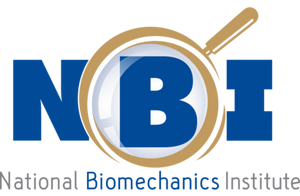Biomechanics
Biomechanics
NBI’s biomechanics experts use scientific and engineering principles to analyze human motion, loading and injury potential in a variety of transportation, industrial, and recreational settings. Our biomechanical analyses involve scientific evaluation of human movement and loading during a dynamic event, and the evaluation of that movement for purposes of assessing injury mechanics and injury potential. We examine the relations between the forces applied to the human body, the motions of the human body, and the physical, mechanical damage to structures of the body. Considering that every human reacts differently to a physical insult, NBI’s biomechanics experts rigorously examine pre-accident medical history to ascertain whether the injured party was at a heightened risk of injury relative to the general populous. The determined forces and motions of the accident in question are then related to the injured party’s health history in effort to determine whether there is a link to the diagnosed injuries.
Biomechanical experts at NBI are capable at conducting analyses and examining questions pertaining to:
- Motor Vehicle Collisions
- Slips, Trips and Falls
- Aviation Accidents
- Product Liability
- Workplace, Industrial, and Recreational Injuries
- Traumatic Brain Injuries
- Efficacy of Helmets and Protective Equipment
Motor Vehicle Collisions
As part of our motor vehicle collision analyses, NBI’s biomechanics experts evaluate occupant kinematics (i.e. movement patterns) and kinetics (i.e forces and load) to help determine and potentially explain injury mechanisms in high and low-speed vehicular collisions. Lap and shoulder belts, pretensioners, and airbags are examined in order to determine their influence on mitigating or possibly contributing to injury. As part of a typical car accident investigation,

NBI experts aim to determine seatbelt use and nonuse, pre- and post-impact body postures, and occupant trajectory, loading, and impact patterns.
Technologies Applied:
Slip, Trips & Falls
Investigations of slip, trip and fall events are conducted as part of NBI’s accident and injury causation analysis, as well as determining the accuracy of the event descriptions by the claimant and witness. As part of these examinations, certified experts conduct slip evaluations using the ENGLISH XL VIT Tribometer. As a supplement to the biomechanical analysis, human factors issues are evaluated. These include the potential influence of low lighting, fall recovery, age, neurological and physical deficits. Building and/or city codes are further scrutinized to determine whether they were in accordance with recognized standards and how this may have contributed to the accident in question

Technologies Applied:
Aviation Accidents:
Injury analyses as part of NBI’s aviation accident investigations include examinations of extrinsic (e.g. oxygen availability) and intrinsic (e.g. metabolic capability) factors that could potentially contribute to injury and/or fatality. Mechanical malfunction and catastrophic failure analyses are conducted as part of the failure analysis protocol in any airplane accident and/or airplane injury.

Technologies Applied:
Product Liability
NBI’s biomechanics experts are adept at product liability, product defect, and product failure analyses. We examine injury potential as the result of structural failure, technical failure, electrical failure, electrical fault, roof collapse, poor construction, and poor maintenance. Electrical failure investigations and technical failure investigations are commonly conducted in conjunction with NBI accident reconstruction experts, whereas analyses pertaining to failure to warn are conducted in conjunction with NBI human factors experts. Defective product investigations are commonly conducted on car parts, apparel (e.g. footwear and high-heels, smart watches), protective equipment (e.g. helmets, shin guards, sleeves) and home / backyard furniture (e.g. ladders / stools, swimming pools). In addition to assessing manufacturing defects and defective product causes and effects, NBI biomechanical engineers also help in product development and optimization through product testing and consultation.

Technologies Applied:
Accident Reconstruction Technologies, VirtualCrash, MADYMO, Helmet Testing, Movement Analysis
Workplace, Industrial, and Recreational Injuries
Injuries in the workplace, industrial accidents and injuries, and sports injuries are commonly evaluated by NBI biomechanics experts. Probable causes of injury are ascertained through an evaluation of accident reports, analysis of medical records, failure analysis and testing, biomechanical modeling, testing of products, and evaluation and comparison to peer-reviewed scientific research. Ergonomic testing is commonly conducted as a supplement for our workplace and industrial accident and injury evaluations. As part of NBI’s recreational and sport injury analyses, product liability investigations are regularly conducted to assess their potential contribution to injury / non-injury. Contributing causes for injuries are evaluated from biomechanical and physiological perspectives. As part of this analysis, pre-accident health condition is evaluated to determine whether the claimant had a heightened or lowered risk for injury relative to the general populous.

Technologies Applied:
CXLT Tribometer, VirtualCrash, MADYMO, Helmet Testing, 3D Movement Analysis
Traumatic Brain Injuries
Potential for traumatic brain injury (including, concussion) is evaluated through a rigorous biomechanical modeling and dynamic simulation techniques. Head and brain dynamics can be evaluated across a variety of settings, including, motor vehicle accidents, pedestrian accidents, slip and falls, trip and falls, and sports participation. Helmet testing is conducted in cases involving bicycles, scooters, motorcycles and sports involving the use of helmets. Presently, NBI is conducting potentially ground-breaking research on vehicle crash severity and mTBI (concussion) potential.

Technologies Applied:
Efficacy of Helmets and Protective Equipment
Protective equipment, including helmets, mouthguards, safety boots, and safety straps, are evaluated to determine their efficacy in injury prevention and mitigation. Helmet testing conferring to ASTM, CPSC, and NOCSAE standards are available and regularly implemented in product liability and/or traumatic brain injury investigations. Load cells, force-plates, and strain-gauges are utilized to assess load and failure capacities across other protective equipment

Technologies Applied:
VirtualCrash, MAYDMO, Helmet Testing, Force Testing, 3D Movement Analysis

